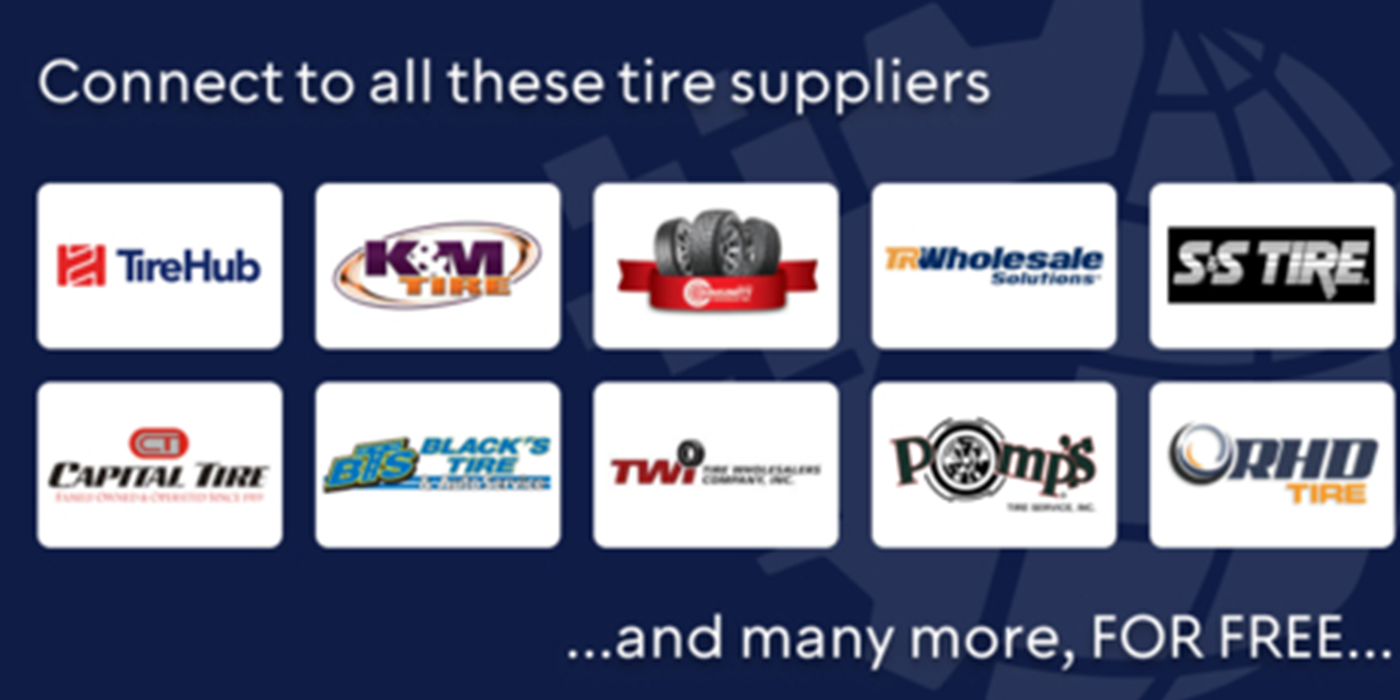 Greg Kirber is the CEO and president of PartsTech and has spent nearly his entire career in the automotive industry – both on the parts and the service side. Frustrated with the telephone ordering process, Kirber founded PartsTech in 2012 to better deliver electronic ordering and digital content solutions to the aftermarket. In 2014, he was named to SEMA’s 35 under 35 list. Kirber currently serves as an adviser to numerous startups and volunteers as an entrepreneur-in-residence for White Board Youth Ventures.
Greg Kirber is the CEO and president of PartsTech and has spent nearly his entire career in the automotive industry – both on the parts and the service side. Frustrated with the telephone ordering process, Kirber founded PartsTech in 2012 to better deliver electronic ordering and digital content solutions to the aftermarket. In 2014, he was named to SEMA’s 35 under 35 list. Kirber currently serves as an adviser to numerous startups and volunteers as an entrepreneur-in-residence for White Board Youth Ventures.
In this exclusive interview, Kirber talks about current purchasing trends, the company’s newest project unveiled at the AASA Vision Conference and the current mindset involving e-commerce solutions.
Earlier this year at the AASA Vision conference, you mentioned that the majority of commercial parts orders are still made over the phone. Why is this and what trends do you see when it comes to parts ordering in the aftermarket?
We dedicate a lot of time at PartsTech to examining purchasing trends in the commercial parts space, specifically behavior as it relates to the research, identification and ordering of auto parts.
One of the most fascinating trends we track is telephone usage in repair shops. We find that repair shops place approximately 80 percent of commercial parts orders for local delivery over the phone. Often, that amounts to hours per day researching and ordering parts. Telephone ordering creates tremendous inefficiency and cost for repair facilities, parts stores and WDs alike. Yet, as an industry, we’ve been slow to transition off of the phone to more efficient online ordering.
Recently, we have seen enormous growth in e-commerce – even exceeding some projections – and we believe that next-generation online ordering is very quickly going to replace telephone ordering for local delivery in the commercial space.
As vehicles continue to grow in complexity, the process of identifying a product, such as a fuel pump, now involves many more variables and requires a shop to communicate a multitude of vehicle attributes over the telephone. There is too much room for error, and many repair shops are repeating these calls across multiple distributors to locate a part. The desire to reduce errors and increase productivity – paired with advances in cataloging and data standards – will accelerate the commercial shift to e-commerce.
Why don’t we see more orders going online versus the phone? In other words, why do garages seem to prefer the phone in your opinion?
Telephone usage in the commercial space has long been an ingrained behavior, and some of the early e-commerce systems often left a lot to be desired. One of the primary drivers of telephone usage today is related to the differences between online ordering systems.
Due to factors like inventory constraints and brand preferences, many shops purchase from multiple vendors. With increasing vehicle complexity and proliferation of SKUs, repair shops frequently have to rely on multiple vendors because a single warehouse simply can’t stock everything. When it comes to online ordering, that means a shop is required to learn multiple e-commerce systems and repeat the lookup process across each of his local vendors’ systems, each with different user interfaces, product classifications and nuances. We frequently hear “I don’t have time to learn three or four different websites and catalogs from each of my parts stores. It’s like speaking three or four different languages.”
Another critical factor is accountability. When you call your local parts store, there is someone there to confirm that the part is actually on the shelf and to give an estimate of the delivery time. Waiting for parts is not the favorite pastime of technicians and shop owners, but the ability to plan ahead and understand when the parts will show up allows for increased productivity. To date, the telephone is often more helpful to a repair shop in terms of order confirmation and planning than the vendor’s own e-commerce system.
There have been e-commerce solutions in the aftermarket for many years, what makes PartsTech different?
There are a number of good e-commerce solutions on the market, some of which have been developed in-house by various distributors and others licensed to distributors. For us, we didn’t start at the distributor level – we looked first to the installer and identified the needs the end purchaser. From restocking filters, to complex orders, to those really hard-to-find parts, we never wanted the user to have to leave the PartsTech system. Installers can buy from any distributor and have the same purchasing experience and ease of use – without regard to the distributor they were ordering from. We help the repair shop quickly search all of their parts vendors in a single search, rather than running four or five different browser tabs and repeating the search across each preferred vendors’ website. With a large distributor network, we didn’t want to stop at showing local availability. If a shop is in a bind for a rare, hard-to-find part, PartsTech allows a shop to search the entire PartsTech distributor network to geo-locate parts that can be quickly shipped to the garage.
A large differentiator for us also is our technology stack. We were lucky in that as a new market entrant, we were able to start with a clean slate – no legacy infrastructure. We were cloud-born from the start. And our in-house parts catalog allows us to quickly and more accurately identify vehicles and the critical attributes for determining the right parts. Many from our technology team came from other verticals, bringing skillsets that allowed us to do some pretty-cutting edge work with aftermarket catalog data.
At the AASA Vision Conference, you unveiled a very visionary parts ordering concept. I understand you worked with engineers at MIT to develop it. Tell us how the project evolved.
Like most of our initiatives, it began with discussions with our trading partners and the shared recognition of a problem, and it evolved into a process of iterating on potential solutions. What we unveiled was a voice-control system for our computer interface, combined with a video chat functionality designed to improve the flow of information between repair shop and parts counter. (See a YouTube video demo here.) This means that a shop can control PartsTech with their voice, pulling up images, schematics, vendor inventory and placing orders without ever having to wash one’s hands, remove gloves or put down tools. The video chat system allows for face-to-face communication between the parts counter and the repair shop, creating the ability for the parts counter to see the vehicle or required component and allowing the repair shop to see the replacement part before ordering – eliminating what had previously been a blind guessing-game.
We weren’t sure that the technology could be built, especially given the complexity of the data sets as well as the noise-canceling functionality required to operate in a repair shop. Working with student engineering interns from MIT was a blast. They don’t take “no” for an answer, and when something looks impossible or improbable, they get even more excited to find a solution. What grew from a whiteboard concept is rolling into beta later this summer, and within days of releasing the teaser video, we had shops across the country calling to help test the system.
What stage are you at with the project in terms of bringing the concept to market? And, what have you learned so far in the process?
We’re actually beyond the concept stage. We have a working prototype that has undergone initial shop testing, and we are working on some major improvements for AAPEX this year. We certainly learned a lot in the process, and as I mentioned, noise-canceling was a major hurdle to overcome – compressors and impact tools don’t make for the easiest environment, but the team was able to work through this relatively quickly.
How long do you estimate it will take for a concept like this to be adopted?
We are certainly not expecting immediate, widespread adoption. There are still many shops out there that write paper invoices and load catalog DVDs every day. That being said, it was clear that the system resonated as a potential solution for many shops, and their feedback has allowed us to expand upon the initial scope of the project. Successful shops are always looking for ways to improve productivity and turn bays faster. Reducing errors and subsequent returns in the parts ordering process is a top priority for everyone. If we can apply technology to improve communication between the repair shop and parts counter, while reducing errors and returns, we’re creating a stronger aftermarket.
As technology in the home and in vehicles is changing, so are the expectations of a younger generation of shop owners and technicians when they come to work. Our goal has always been to create leading solutions to make ordering the right parts as easy and efficient as possible, and we pride ourselves on continued innovation as technology changes, the industry evolves, and as the next generation of shop owners and installers arrive.














